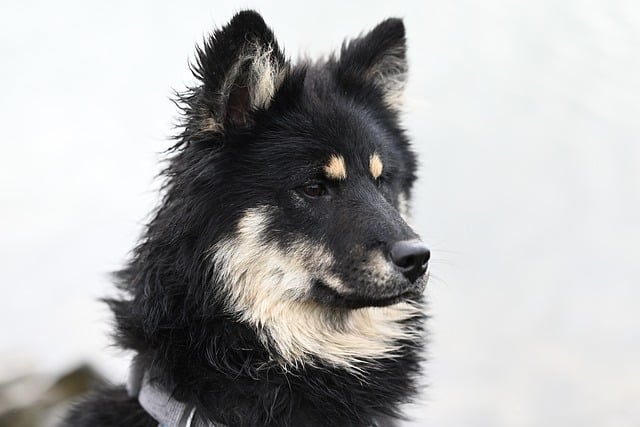
How can I tell if my dog's heatstroke is serious
Let’s be real: It’s a sticky August morning in Los Angeles, and you took your 2-year-old Golden Retriever, Max, for a walk a little later than usual
As a dog owner, nothing beats the sight of your furry friend gobbling up a meal with gusto. But beneath that tail-wagging enthusiasm lies an important question: what’s truly the healthiest food to fuel your dog’s body? It’s a topic filled with myths and misinformation, but peeling back the layers reveals some straightforward truths.
At the core, dogs thrive on a balanced diet mirroring their ancestral needs. While domesticated dogs have adapted over centuries, their bodies still crave animal protein. High-quality meat sources like chicken, beef, and fish should anchor your dog’s diet, providing essential amino acids for muscle development and immune support. Avoid products where “meat by-products” are the first ingredient—these vague terms can hide low-quality fillers.
Don’t overlook the power of whole foods. Fresh vegetables like carrots, spinach, and sweet potatoes offer fiber, vitamins, and antioxidants. Blueberries, often hailed as a superfood for humans, work wonders for dogs too, supporting brain health and reducing inflammation. Just remember to cook or puree tough veggies to aid digestion, and always remove pits and seeds, which can be toxic.
 For pet parents exploring commercial options, scrutinize labels carefully. Look for AAFCO (Association of American Feed Control Officials) statements certifying complete and balanced nutrition. Avoid formulas laden with artificial colors, flavors, and preservatives. Grain-free diets have surged in popularity, but contrary to some claims, grains aren’t inherently bad—unless your dog has a diagnosed sensitivity. Whole grains like brown rice and oats provide valuable energy and fiber.
For pet parents exploring commercial options, scrutinize labels carefully. Look for AAFCO (Association of American Feed Control Officials) statements certifying complete and balanced nutrition. Avoid formulas laden with artificial colors, flavors, and preservatives. Grain-free diets have surged in popularity, but contrary to some claims, grains aren’t inherently bad—unless your dog has a diagnosed sensitivity. Whole grains like brown rice and oats provide valuable energy and fiber.
Homemade diets can be rewarding, but tread carefully. Consult your vet or a board-certified veterinary nutritionist to ensure proper nutrient ratios. A common pitfall is overlooking key elements like calcium, which can lead to bone issues if imbalanced. And while sharing table scraps might feel like a loving gesture, many human foods—chocolate, onions, grapes—are highly toxic to dogs. Even “safe” treats like peanut butter should be given sparingly, especially if it contains xylitol, a sweetener deadly to canines.
Regional regulations also play a role. Some areas restrict raw food diets due to concerns about bacterial contamination—both for pets and humans handling the food. If you choose raw feeding, source from reputable suppliers, follow strict hygiene protocols, and consider your local laws. Additionally, be cautious with trendy supplements; while omega-3 fatty acids can benefit skin and coat health, excessive dosing can disrupt natural nutrient balances.
Ultimately, the healthiest diet for your dog is as unique as they are. Puppies, seniors, working dogs, and those with health conditions all have distinct nutritional needs. Observe your dog’s energy levels, coat condition, and stool quality—these are telltale signs of whether their diet is hitting the mark. And when in doubt, lean on your vet’s expertise. After all, ensuring your dog’s long, happy life starts with the food in their bowl.

Let’s be real: It’s a sticky August morning in Los Angeles, and you took your 2-year-old Golden Retriever, Max, for a walk a little later than usual

You're enjoying a summer afternoon at the park when you notice your dog has stopped panting and appears disoriented - their gums are bright red

Let’s paint the picture: You’re in your Denver apartment, watching your 4-year-old Boston Terrier, Ruby, plop down mid-play session with her favorite toy

Many dog owners notice their pets nails seem shorter after regular walks,but how much does this daily activity actually help?The answer depends on where you walk—concrete sidewalks or asphalt streets gently file nails as a dog's paws hit the ground

Most dog owners notice their pup scooting across the carpet at some point, but few connect it to impacted anal glands. These small sacs near a dog’s rectum secrete a scent for marking territory

Most vets agree that regular dog teeth cleaning is key to avoiding painful dental issues later. For healthy adult dogs, a professional cleaning at the vet’s office every 12 to 18 months usually works well.